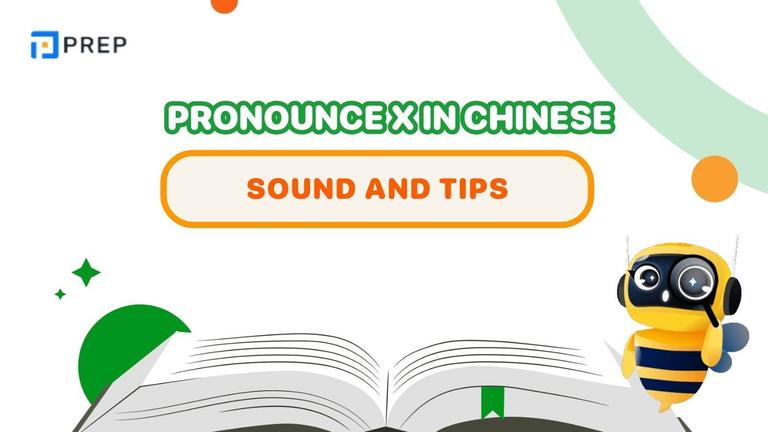What is Before? General knowledge about Before in English
Understanding the word "before" might seem straightforward, yet this versatile term serves multiple grammatical functions that often confuse English learners. Whether you're preparing for English proficiency exams or simply want to communicate more effectively, mastering before in English will significantly improve your language skills.
- I. Defining Core Meaning and Purpose of Before in English
- II. How Before in English Use Across Different Tenses
- III. How Before in English Functions in a Sentence
- IV. Some Words/Phrases That Go with Before in English
- V. Avoiding Common Mistakes: Using "Before" Correctly
- VI. Frequently Asked Questions (FAQs) About "Before in English” and Time Words
- VII. Conclusion
I. Defining Core Meaning and Purpose of Before in English
The word before in English fundamentally indicates precedence in time or position, serving as one of English's most essential sequencing words. Before /bɪˈfɔːr/ means "earlier" or "prior to." It is used in sentences in various roles, such as an adverb, preposition, or conjunction. At its simplest level, before establishing relationships between events, moments, or locations by showing what happens earlier or comes first in a sequence.
Three Core Functions of Before in English:
This seemingly simple word demonstrates remarkable grammatical flexibility:
-
Preposition: Connects actions to specific time points, anchoring events to temporal references
-
Conjunction: Links two complete events in chronological sequence, building complex sentence structures
-
Adverb: Indicates past occurrences, modifying entire statements without requiring specific objects
|
Context |
Example Usage |
Purpose |
|
Time Reference |
"Submit reports before Friday" |
Creates deadline clarity |
|
Event Sequence |
"Before you speak, think carefully" |
Establishes logical order |
|
Past Experience |
"I've heard this story before" |
References previous occurrence |
Understanding these multiple roles becomes crucial for anyone seeking to achieve fluency in English communication. The before meaning in English extends beyond basic temporal references, encompassing spatial relationships and logical sequences that native speakers use instinctively. This foundational knowledge prepares learners to navigate the more complex applications and common pitfalls that arise when using this essential word.
II. How Before in English Use Across Different Tenses
Now that you understand the grammatical roles of before in english, let's explore specific tense combinations and timing patterns in real communication contexts.
1. Past Time Sequences: Expressing Completed Actions
When describing two past events, before use in sentence helps establish which action happened first. The timing relationship determines your tense choices.
Pattern 1: Past Perfect + before + Simple Past
-
Sarah had finished her presentation before the meeting started.
-
The train had already departed before we arrived at the station.
Pattern 2: Simple Past + before + Simple Past
-
I called my mom before I left the house.
-
The students reviewed their notes before they took the exam.
2. Present Habits and Routines: Regular Sequences
Use before in English to describe habitual actions that always happen in the same order, typically using simple present tense for both clauses.
Daily Routine Patterns:
-
She drinks coffee before she checks her emails every morning.
-
Before children go to school, they eat breakfast at home.
3. Future Planning: Scheduled Event Sequences
When planning future events, before in english establishes the order of upcoming actions, using simple present in the "before" clause even when referring to future time.
Future Planning Patterns:
-
I will finish this report before the deadline arrives tomorrow.
-
Before the conference begins next week, we will prepare all materials.
This revision makes it clear that the first section teaches what "before" is grammatically, while this section teaches when to use specific tense combinations with "before".
III. How Before in English Functions in a Sentence
To use before correctly and confidently, you must understand its three distinct grammatical functions, each serving specific purposes in sentence construction and meaning creation.
1. As a Preposition: Connecting Actions to Time and Place
When before in english functions as a preposition, it creates relationships between verbs and specific time references or spatial positions. Consider "I studied before the exam," where before links the action of studying to a specific future event. Similarly, "She arrived before 3 PM" connects arrival to a precise time marker.
|
Structure |
Example |
Function |
|
Before + Gerund |
"Before eating breakfast" |
Creates temporal framework |
|
Before + Noun Phrase |
"Before the meeting" |
Establishes time reference |
|
Before + Pronoun |
"Before us" |
Shows position/sequence |
Remember that when before acts as a preposition, it cannot introduce a complete clause with both subject and verb.
2. As a Conjunction: Linking Complete Thoughts and Events
Conjunction usage transforms before into a powerful tool for building complex sentences that express chronological relationships between complete ideas. In "I finished my homework before I watched television," the before clause provides essential timing information for understanding the sequence of events.
-
Comma Rules: When the before clause begins the sentence, use a comma: "Before you leave, please turn off the lights." When the main clause comes first, no comma is needed: "Please turn off the lights before you leave."
3. As an Adverb: Modifying Entire Statements
Adverbial usage of before in english provides temporal context for entire sentences without requiring specific objects or dependent clauses. Simple adverbial constructions like "I've seen this movie before" or "Has this happened before?" demonstrate how the word modifies complete statements rather than connecting specific elements.
IV. Some Words/Phrases That Go with Before in English
|
Word/Phrase |
Meaning |
Example |
|
Before you know it |
Very soon; used to indicate that something will happen sooner than expected. |
A month seems like a long time, but it will be here before you know it. |
|
Before long |
In a short time; soon. |
With many exercises, Jenny will be back in shape before long. |
|
Before the Flood |
A very long time ago; often used to refer to a time far in the past. |
Jenny has studied in this school before the Flood. |
|
Before someone's time |
A period prior to the birth or the beginning of work, career, or a particular era of someone. |
The movie was released before his time, so he didn’t know much about it. |
|
Come before |
To precede in an order or to be of greater importance in a specific situation. |
In this project, safety comes before everything else. |
|
As never before |
Emphasizing that something has never happened or has never been as intense as it is now. |
She worked as hard as never before to finish the project on time. |
|
Leg before wicket |
A term in cricket, referring to a situation when the ball hits the batsman's leg before hitting the wicket. |
The umpire gave him out for leg before wicket. |
|
Look before you leap |
Think carefully before you take action; avoid acting hastily or impulsively. |
Before you make a decision, look before you leap to ensure it’s the right choice. |
|
Accessory before the fact |
A person who assists or supports in the commission of a crime before it occurs, but does not directly participate in the criminal act. |
The suspect was charged with accessory before the fact for helping plan the robbery. |
V. Avoiding Common Mistakes: Using "Before" Correctly
Even advanced English speakers occasionally struggle with before usage, particularly when distinguishing it from similar temporal expressions or spatial indicators.
1. Before vs. Ago: Understanding the Time Direction
The distinction between before and ago represents one of the most frequent sources of confusion for English learners, as both words relate to past events but function differently in temporal calculations.
|
Aspect |
Before |
Ago |
|
Reference Point |
Another event or time |
The present moment |
|
Example |
"I ate before the movie" |
"I ate two hours ago" |
|
Time Calculation |
Relative to specified event |
Backward from now |
|
Usage with Numbers |
Rarely used with specific durations |
Always used with time measurements |
Before in English established relationships between events without requiring specific time measurements, focusing on sequence rather than duration. When you say "I called before the meeting," you're emphasizing order, not measuring time intervals. Conversely, ago always calculates backward from the present moment, requiring specific duration markers like "three days ago" or "several years ago."
2. Before vs. In Front Of: Spatial Distinctions Matter
Physical positioning creates another area where before usage requires careful consideration, as spatial applications differ significantly from temporal ones in modern English. Contemporary English strongly prefers "in front of" for most spatial relationships, reserving before for formal or ceremonial contexts. Standard descriptions use "The car parked in front of the building" rather than "before the building."
However, formal contexts maintain “before in english” usage for spatial relationships in phrases like "before the court," "before the altar," or "before the throne." Modern conversational English almost exclusively uses "in front of" for spatial relationships, while before concentrates on temporal applications.
Having established the fundamental mechanics of before usage, you now possess the essential knowledge needed to communicate effectively using this versatile word. These core concepts provide the foundation for exploring more nuanced questions that arise in advanced English usage and professional communication contexts.
VI. Frequently Asked Questions (FAQs) About "Before in English” and Time Words
-
How does the formality of "prior to" compare to "before"?
Prior to represents a more formal alternative to before, commonly appearing in academic writing, legal documents, and professional correspondence. While both words convey identical temporal relationships, prior to creating a more sophisticated, technical tone appropriate for formal contexts. Business communications and scholarly writing often prefer prior to, while conversational English naturally gravitates toward the simpler before construction.
-
Is it ever correct to use before in english for a physical location?
Physical location usage of before remains grammatically correct but sounds archaic in contemporary English, except in specific formal or ceremonial contexts. Modern speakers almost exclusively use "in front of" for spatial relationships, reserving "before for traditional phrases like "before the judge" or "before the altar." This distinction reflects the natural evolution of English toward clearer, more specific spatial vocabulary.
-
What exactly defines a "preposition of time"?
Prepositions of time create relationships between actions and temporal references, including specific moments (at 3 PM), durations (during the meeting), sequences (before lunch), and periods (in January). These words require objects (nouns, pronouns, or gerunds) and cannot introduce complete clauses with subjects and verbs, distinguishing them from temporal conjunctions that connect full sentence structures.
VII. Conclusion
Mastering before in English requires understanding its three distinct grammatical roles: preposition, conjunction, and adverb. Remember that before as a preposition connects actions to time references, as a conjunction links complete thoughts in sequence, and as an adverb modifies entire statements.
The key to confident usage lies in recognizing these distinctions and avoiding confusion with words like "ago" and "in front of." Practice applying these concepts in daily communication. With consistent application, you'll develop the intuitive understanding that characterizes fluent English expression.

Hi I'm Chloe, and I am currently serving as an Product Content Administrator at Prep Education. With over five years of experience in independent online IELTS study and exam preparation, I am confident in my ability to support learners in achieving their highest possible scores.
Comment
Premium content
View allPersonalized roadmap
Most read












